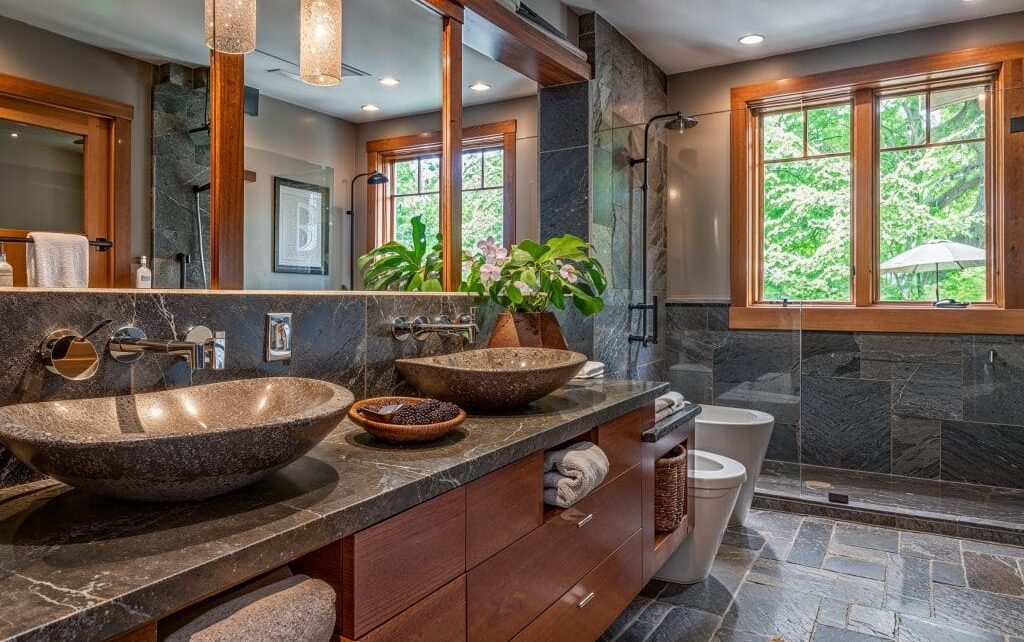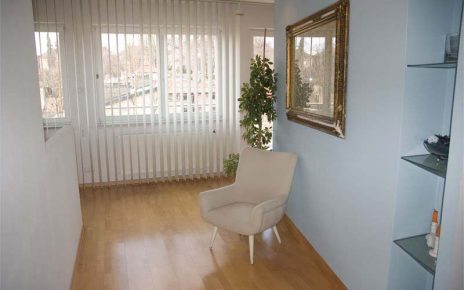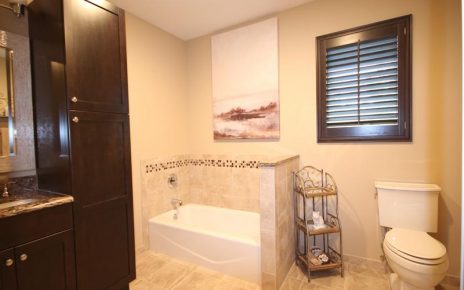Table of Contents
A bathroom renovation can breathe new life into your home, enhancing both functionality and style. Whether you’re updating a powder room or undertaking a full master-bath overhaul, careful planning, realistic budgeting, and the right team of professionals are key to a successful project. Here’s a step-by-step guide to help you navigate your bathroom renovation from concept to completion.
1. Define Your Goals and Priorities
Before shovels hit the tiles, clarify why you’re renovating. Common objectives include:
- Improving functionality, such as adding storage or installing a double vanity.
- Updating outdated fixtures and finishes for a modern look.
- Enhancing accessibility, with features like walk-in showers, grab bars, or comfort-height toilets.
- Increasing home value, as an updated bathroom can yield a strong return on investment.
List your must-haves (e.g., heated floors, frameless glass shower) and nice-to-haves (e.g., decorative tile backsplash), so you can balance desires against budget.
2. Establish a Realistic Budget
Bathroom remodels vary widely in cost—simple cosmetic updates might run $5,000–$10,000, while high-end renovations can exceed $30,000. To set a sensible budget:
- Research average costs for labor and materials in your area.
- Allocate funds across major categories: plumbing/electrical (20–35%), fixtures (15–25%), cabinetry and countertops (15–20%), flooring and tile (15–20%), labor (20–35%).
- Include a contingency of at least 10–15% for unexpected issues, such as hidden water damage or code compliance upgrades.
Being transparent about budget with your contractor from the start prevents costly surprises down the line.
3. Create a Detailed Design Plan
Work with a designer or use online tools to visualize layout changes before committing. Key considerations:
- Layout optimization: Can you relocate the toilet, shower, or vanity easily? Moving plumbing is expensive but may be worth it for a better flow.
- Fixture selection: Choose energy- and water-efficient models—low-flow toilets, faucets, and showerheads—to save long-term on utility bills.
- Lighting strategy: Layer ambient, task, and accent lighting. Recessed LED downlights paired with vanity sconces eliminate shadows and brighten the space.
- Ventilation: A high-capacity exhaust fan prevents mold and mildew, protecting finishes and ensuring air quality.
Mood boards or 3D renderings help you commit to finishes and ensure cohesive style.
4. Hire Qualified Professionals
Unless you’re a seasoned DIYer, a team of licensed tradespeople is crucial:
- General contractor to oversee the project, coordinate sub-contractors, and manage timeline.
- Plumber and electrician to handle system updates and code-required permits.
- Tile setter and carpenter for precise installation of finishes and cabinetry.
Check references, review portfolios of past bathroom projects, and confirm licensing and insurance. A clear, written contract should outline scope, schedule, payment milestones, and warranty terms.
5. Select Durable, Low-Maintenance Materials
Bathrooms endure moisture and heavy use, so choose materials that withstand humidity and are easy to clean:
- Porcelain or ceramic tile for floors and walls—resistant to stains and scratches.
- Quartz countertops for vanities—non-porous and virtually maintenance-free.
- Moisture-resistant drywall (green board) behind shower enclosures.
- Powder-coated or stainless-steel fixtures to prevent corrosion.
Opting for classic neutral colors ensures your renovation stands the test of time and appeals to future buyers.
6. Plan for a Smooth Timeline
A typical bathroom renovation takes 4–8 weeks, depending on complexity. A sample schedule:
- Weeks 1–2: Demolition, rough-in plumbing and electrical.
- Weeks 2–4: Backer board, waterproofing, and tile installation.
- Weeks 4–5: Painting, cabinetry and countertop installation.
- Weeks 5–6: Fixture installation—toilet, faucets, shower door.
- Week 6: Final inspections, touch-ups, and cleanup.
Regular check-ins with your contractor keep the project on track and address issues promptly.
7. Consider Sustainable Upgrades
Eco-friendly features not only reduce environmental impact but can qualify you for rebates:
- Low-flow toilets and WaterSense® faucets conserve water.
- LED lighting cuts energy use and lasts longer.
- Reclaimed wood or recycled glass tiles add unique character with sustainable credentials.
- Tankless water heater for on-demand hot water and improved energy efficiency.
Green renovations often pay for themselves through utility savings and increased resale value.
8. Prepare for the Unexpected
Hidden issues—like rotten subflooring, outdated wiring, or asbestos tile adhesives—can emerge once demolition begins. Mitigate risk by:
- Factoring contingency funds into your budget.
- Scheduling early inspections for plumbing, electrical, and structural components.
- Communicating swiftly with your contractor about necessary changes to avoid delays.
Flexibility and transparency ensure surprises don’t derail your vision.
9. Final Touches and Styling
Once construction wraps up, elevate the space with thoughtful accessories:
- Coordinated hardware (towel bars, drawer pulls) for a polished look.
- Open shelving or decorative niches to display neatly folded towels, plants, or art.
- Heated towel bars for a luxurious spa feel.
- Statement mirror with integrated lighting or decorative frame to serve as a focal point.
These finishing elements bring personality and function to your new bathroom.
A well-executed bathroom renovation enhances daily comfort, boosts home value, and transforms a utilitarian space into a relaxing retreat. By defining clear goals, budgeting wisely, partnering with experienced professionals, and choosing durable materials, you’ll enjoy a beautiful, functional bathroom for years to come. Start planning today, and turn your renovation dreams into reality!




